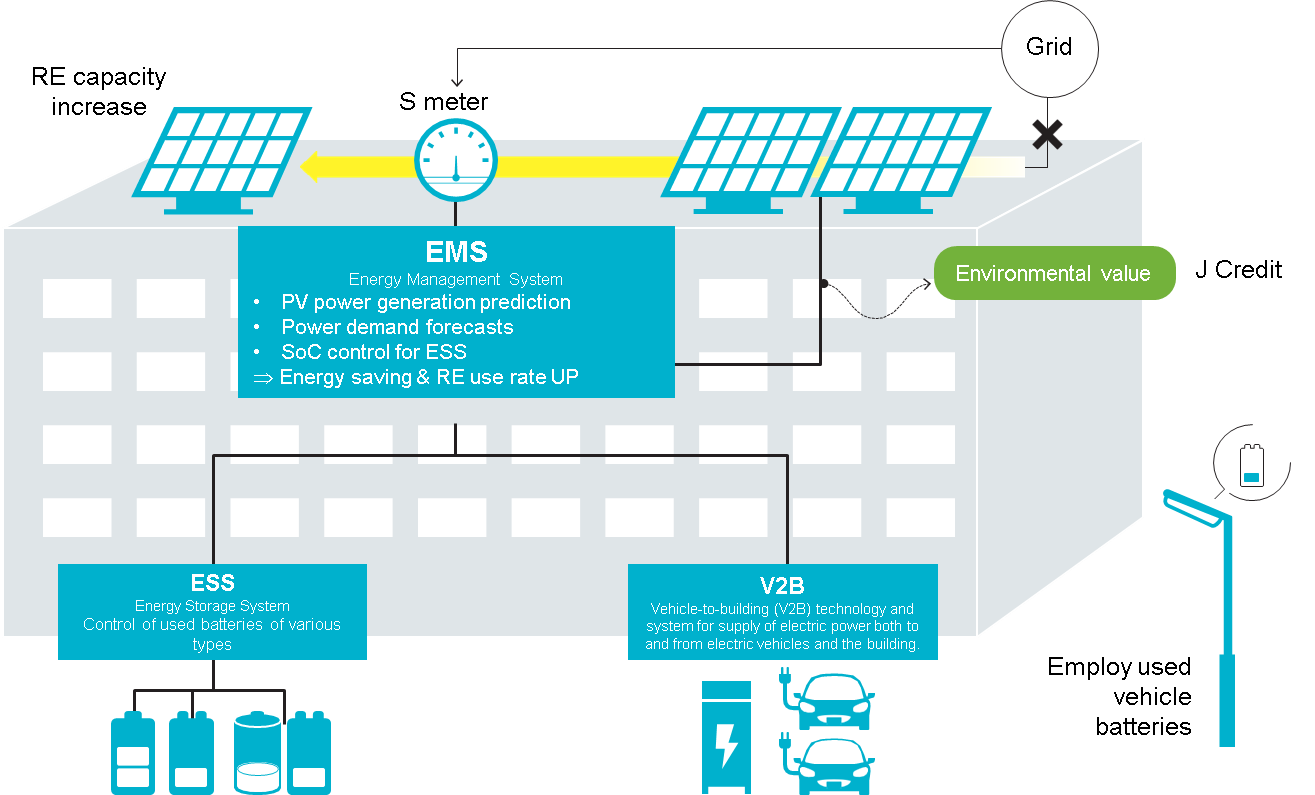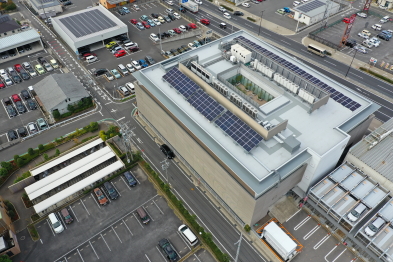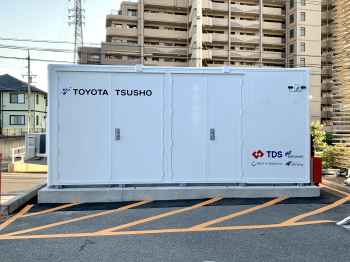Toyota Tsusho Conducts a Pilot Renewable Energy Management Project at Its Own Office Building
- (former)other
2021-04-07
Toyota Tsusho Corporation ("Toyota Tsusho") announces that it has installed an energy management system*1 (EMS) together with photovoltaic(PV) power generation system and energy storage batteries, at its Toyota Branch building, in cooperation with Goal connect Co., Ltd. ("GC"), TEPCO Power Grid, Inc. ("TEPCO PG"), NExT-e Solutions Inc. ("NExT-eS") and others in order to examine and verify management of a renewable energy (RE) system. The system was in pilot operation for about four months from December 2020 to March 2021 and was confirmed to reduce the branch office's power utility bill, improve the RE use rate on electric power consumption, and strengthen its business continuity plan (BCP) in preparation for power failures due to natural disaster, etc. Additional test operation is scheduled in the future. Additionally, Toyota Tsusho plans to develop the system as a commercial energy management package for business enterprises and buildings.
1. Background
With the impacts of climate change growing on a global scale in recent years, the demand for wider RE use has grown in the drive to protect the global environment. The number of business corporations and organizations joining the international initiative RE100*2 is growing each year. Interest in activities aimed at achieving the SDGs is rising as well.
Moreover, the Japanese government announced a target of achieving virtually zero greenhouse gas emissions by 2050. In Japan, a growing number of companies are organizing activities to increase their RE use rates at individual offices and plants.
The three leading activities are (1) procurement of RE-derived electric power, (2) purchase of J-credits,*3 such as Non-Fossil Certificates, and (3) self-consumption of power through equipment installation within the company. Among the three alternatives, (3) involves issues in equipment cost and in non-realization of the optimal energy management method, which are impede wider adoption.
2. Summary of the Pilot Operation
Toyota Tsusho established a pilot operation site at its building that houses its Toyota Branch, with PV panels installed on the rooftop and in its parking space for generating power, which is in turn stored by an energy storage system utilizing used storage batteries for motor vehicles, for verification of a model that can be utilized optimally. In particular, the energy storage system, which was developed in cooperation with TEPCO PG and NExT-eS, employs used vehicle storage batteries and can utilize any combination of storage batteries, both new and used and regardless of type, cell producers or storage capacity. For the EMS that is to serve as the core of energy management, a predictive and mechanical learning solution from GC was utilized to control energy supply/demand balance.
In the pilot project that ran from December 2020 to March 2021, the results indicated that electric power consumption at the branch could be reduced by as much as 50 kW and RE use rate was expected to improve by as much as about 20%*4 per year. Furthermore, the use of storage batteries confirmed that the system is capable of functioning as an emergency power source that is capable of providing electric power for up to about one week in case of power failure due to natural disaster, etc. The pilot operation confirmed that the procurement rate for RE-derived power can be raised and at the same time that power generated by the system and consumed at the branch can be sold as J-credits, raising the possibility of creating additional environmental value.
This project serves as an example of a model of local electric power generation for local consumption, through installation of necessary equipment for a single worksite. Utilizing the knowledge and expertise gained through the project, Toyota Tsusho plans to commercialize energy management solutions aimed at higher RE use rate.
Taking advantage of innovative technologies, we plan to create models that utilize renewable energies to the fullest, promote wider dissemination, and thereby contribute to the transition to a decarbonized society.
Toyota Branch Pilot Energy Management Model
 |
 |
| Exterior view of the Toyota Branch Office | ESS: Energy Storage System |
*1 Energy management system (EMS):
A system designed for comprehensive energy management, including energy management, analysis and control, through greater visibility of the state of energy use.
*2 RE100:
An international environmental initiative created for the reduction of environmental impact caused by business activities.
*3 J-credit:
A scheme in which the quantities of reduction and absorption of CO2 and other greenhouse gas emissions, realized through activities such as use of renewable energies, are recognized and certified as credits by the Japanese government.
*4 Renewable energy use rate for a full year calculated, based on the results of the pilot operation for roughly 4 months
The information in this release is current as of the date of announcement.
Please note that information may change after the date of announcement. Thank you in advance for your understanding.



